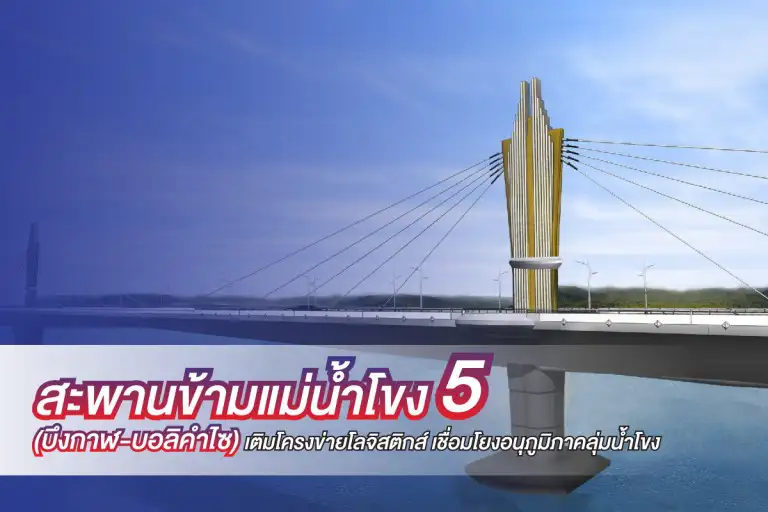Fifth Mekong River Bridge (Bueng Kan - Bolikhamxay): A Gateway to the Greater Mekong Region
October, 22 2021

Strategic Importance of the Fifth Mekong River Bridge
This major infrastructure project will significantly improve transportation connectivity between Thailand’s Northeastern region (Isaan) and Central Laos, extending further to Vietnam’s Vung Ang Deep-Sea Port on the South China Sea.
From there, exports and imports can be efficiently routed to key global markets, including China, Japan, South Korea, and Russia. Additionally, this bridge will facilitate an alternative trade route through China’s Belt and Road Initiative (BRI) to Europe via Russia, supplementing existing maritime trade routes through the Indian and Pacific Oceans.
Economic Impact and Future Projections
- Trade between Bueng Kan and Bolikhamxay is projected to exceed 10 billion THB once the bridge is operational.
- Before the COVID-19 pandemic, cross-border trade between Bueng Kan and Laos was valued at approximately 6 billion THB.
- However, due to the pandemic’s impact in 2020, the trade volume dropped significantly to 2.9 billion THB.
- The new bridge is expected to revitalize border trade and investment in the region.
Supporting Infrastructure Development in Bueng Kan
To accommodate the expected economic boom, Bueng Kan province has initiated feasibility studies for several infrastructure projects, including:
- Bueng Kan Airport
- A new highway connecting Bueng Kan to Udon Thani (159 km, via Kumphawapi district)
- Parallel irrigation canals along the new highway to divert Mekong River water to the Nong Han Reservoir (Kumphawapi Dam) and Ubolratana Dam (Khon Kaen province), enhancing irrigation systems across Isaan.
China-Laos Railway & Its Impact on Bueng Kan
The China-Laos Railway, officially launched in December 2021, is another game-changing factor for the region. The railway is expected to:
- Boost tourism, as more Chinese and international travelers visit the area via rail.
- Attract Chinese investors to explore business opportunities in rubber plantations, processing industries, and new manufacturing sectors.
- Enhance regional logistics, offering a faster, safer, and more cost-effective trade alternative compared to existing ferry services across the Mekong.
This enhanced logistics network will strengthen economic integration in the Greater Mekong Subregion (GMS) and attract increased foreign direct investment (FDI) from Vietnam, China, and other neighboring countries.